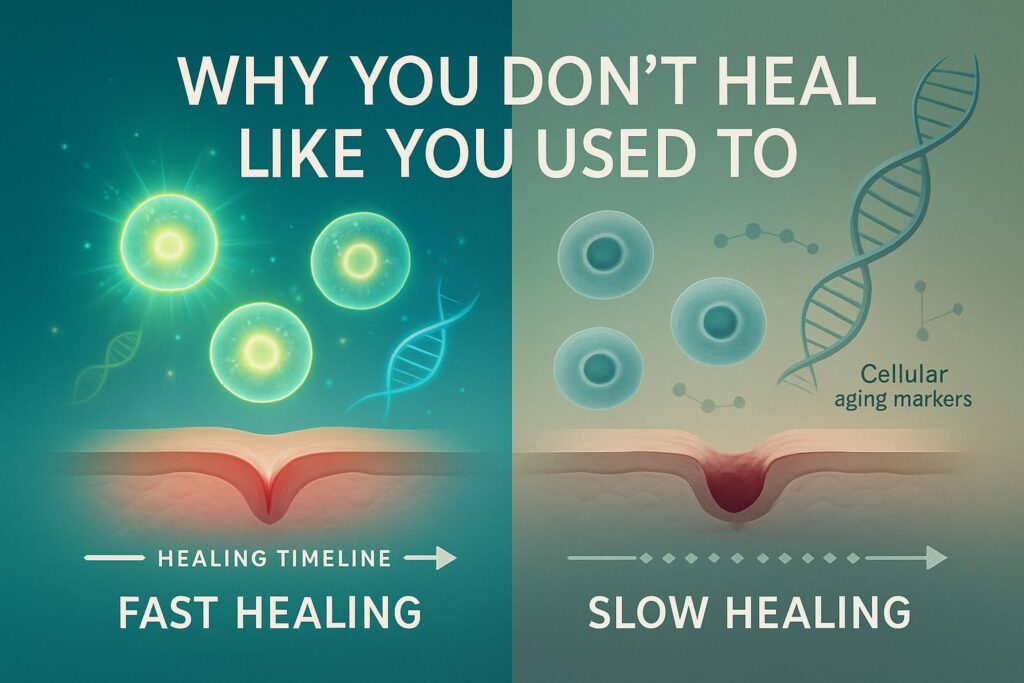Are you suffering from knee pain and reduced mobility?
The decision to undergo knee replacement surgery is a significant one, but is it the only option? Is there an alternative that offers effective relief without the invasiveness of surgery?
Introducing stem cell therapy, a regenerative treatment that may provide a viable alternative to traditional knee replacement. By injecting umbilical cord stem cells directly into the affected area, stem cell therapy aims to promote healing and decrease inflammation, all without the need for invasive surgery.
But is stem cell therapy truly a competent alternative to knee replacement? How does it work? And what are the benefits it offers?
Key Takeaways:
- Stem cell therapy offers a non-invasive alternative to knee replacement surgery for patients suffering from knee pain and reduced mobility.
- It involves injecting umbilical cord stem cells directly into the affected area, promoting healing and decreasing inflammation.
- Stem cell therapy allows patients to choose the best treatment option for their individual situation, avoiding the risks and lengthy recovery time associated with knee replacement surgery.
- By using the patient’s own stem cells, ethical considerations associated with embryonic stem cells are eliminated.
- Speak with a medical professional to determine if stem cell therapy is the right choice for your knee pain relief.
Knee Replacement Surgery
Knee replacement surgery is a common procedure for individuals suffering from chronic knee pain and significant damage to the knee joint. This invasive surgery involves removing the damaged bone and cartilage in the knee and replacing it with an artificial knee joint. The goal of the surgery is to alleviate pain and restore function, allowing individuals to regain their mobility and quality of life.
During knee replacement surgery, patients are put under general anesthesia to ensure they remain comfortable throughout the procedure. The surgeon carefully removes the damaged knee joint, including the bones and cartilage, and replaces it with an artificial knee implant. This implant is made of durable materials and designed to mimic the natural movement of a healthy knee.
Following the surgery, a period of rehabilitation is necessary to aid in the recovery and regain strength in the knee. This may involve physical therapy and exercises designed to improve mobility and restore full range of motion. The recovery time can vary depending on the individual, but it generally takes several months before patients can fully resume their daily activities.
It’s important to note that knee replacement surgery is a major procedure and carries certain risks, such as infection, blood clots, and nerve damage. Additionally, the artificial knee joint has a lifespan of approximately 10 to 20 years, meaning younger patients may require additional replacement surgeries in the future.
| Benefits of Knee Replacement Surgery |
|---|
| Alleviates chronic knee pain |
| Restores function and mobility in the knee joint |
| Improves quality of life |
| Provides long-term relief |
In conclusion, knee replacement surgery is a viable option for individuals with severe knee joint damage and chronic pain. While it is an invasive procedure with associated risks, it offers the potential for significant pain relief and improved mobility. It’s important to consult with a healthcare professional to determine if knee replacement surgery is the right solution for your specific condition.
Stem Cell Therapy for Knee Pain
Are you suffering from knee pain and seeking a non-invasive treatment option? Look no further than stem cell therapy. This regenerative approach offers an alternative to knee replacement surgery and has shown promising results in alleviating pain and promoting healing.
Stem cell therapy involves injecting autologous stem cells, derived from your own body, directly into the affected area, such as the knee joint. These cells have the remarkable ability to regenerate damaged tissue and stimulate the body’s natural healing process.
Unlike knee replacement surgery, stem cell therapy is a minimally invasive procedure that does not require general anesthesia. The treatment is performed as an outpatient procedure, allowing you to return home on the same day with little to no downtime.
Recovery time is typically shorter compared to surgery, and patients may experience improved pain relief and knee function within a few months.
The Benefits of Stem Cell Therapy for Knee Pain:
- Regenerative: Stem cell therapy promotes the regeneration of damaged tissue in the knee joint, providing long-lasting relief.
- Non-Invasive: Unlike surgery, stem cell therapy does not involve extensive incisions or the need for artificial implants.
- Pain Alleviation: Stem cell therapy reduces inflammation and stimulates the body’s natural healing response, effectively alleviating knee pain.
- Autologous Stem Cells: By using your own stem cells, there are no ethical considerations associated with embryonic stem cells.
Stem cell therapy offers a promising treatment option for individuals looking to repair damaged knee tissue and alleviate knee pain. Speak with a medical professional to determine if this non-invasive approach is the right choice for your individual situation.

Benefits of Stem Cell Therapy vs. Knee Replacement
When considering treatment options for knee repair, stem cell therapy offers several advantages over knee replacement surgery. Stem cell therapy is a non-invasive and natural approach that promotes healing and regeneration in the knee joint without the need for artificial implants. Let’s explore the benefits of choosing stem cell therapy for knee pain relief and improved joint function.
1. Non-Invasive Knee Repair
Unlike knee replacement surgery, which involves invasive procedures and the removal of damaged bone and cartilage, stem cell therapy offers a non-invasive alternative. The treatment involves injecting the patient’s own stem cells directly into the affected area, stimulating the body’s natural healing process and encouraging tissue regeneration. This non-invasive approach reduces the risks associated with surgery and eliminates the need for extensive rehabilitation and recovery time.
2. Retention of Joint Function
Stem cell therapy allows patients to retain their own joint function. By using the patient’s own stem cells, the treatment promotes the regeneration of damaged tissues, cartilage, and bone in the knee joint. This leads to improved mobility, increased range of motion, and a restoration of joint function. Patients can experience long-term relief from knee pain while preserving the natural movement and stability of their knee joint.
3. Long-lasting Pain Relief
One of the key benefits of stem cell therapy is its potential for long-lasting pain relief. By targeting the underlying causes of knee pain and stimulating the regeneration of damaged tissues, stem cell therapy addresses the root of the problem rather than simply masking the symptoms. This can provide patients with significant and sustainable pain relief, allowing them to resume their daily activities, exercise, and enjoy an improved quality of life.
4. Use of Patient’s Own Stem Cells
Stem cell therapy utilizes the patient’s own stem cells, eliminating any ethical concerns associated with embryonic stem cells. By harnessing the regenerative power of the patient’s own body, stem cell therapy promotes natural healing and reduces the risk of rejection or complications. This personalized approach ensures that the treatment is tailored to each individual, maximizing its effectiveness and minimizing any adverse effects.
Overall, stem cell therapy offers a non-invasive and patient-centered treatment option for knee repair, providing numerous benefits compared to knee replacement surgery. By promoting natural healing, retaining joint function, providing long-lasting pain relief, and using the patient’s own stem cells, stem cell therapy is a right choice for individuals seeking an effective and personalized approach to knee pain relief and improved joint function.
| Benefits of Stem Cell Therapy vs. Knee Replacement |
|---|
| Non-invasive knee repair |
| Retention of joint function |
| Long-lasting pain relief |
| Use of patient’s own stem cells |
Conclusion
When it comes to finding the best treatment option for chronic knee pain, it’s important to carefully consider the benefits and drawbacks of both stem cell therapy and knee replacement. While knee replacement surgery has long been the traditional approach, stem cell therapy offers a non-invasive alternative that can provide significant advantages.
Stem cell therapy harnesses the power of regenerative medicine to promote natural healing and provide relief from chronic knee pain. This innovative treatment option involves using the patient’s own stem cells to regenerate damaged tissue and reduce inflammation. With stem cell therapy, there is no need for invasive surgery or the use of artificial implants.
In addition to being a safer and less invasive option, stem cell therapy offers a shorter recovery time compared to knee replacement surgery. This means that patients can experience faster pain relief and return to their normal activities sooner. Plus, the use of the patient’s own cells eliminates ethical concerns associated with other types of stem cells.
If you’re suffering from chronic knee pain, stem cell therapy may be the right treatment option for you. Consult with a medical professional who specializes in regenerative medicine to discuss the potential benefits and determine if stem cell therapy is suitable for your individual situation. Don’t let knee pain hold you back – explore the possibilities of stem cell therapy today.
FAQ
What is the difference between stem cell therapy and knee replacement surgery?
Stem cell therapy involves injecting stem cells into the affected area to promote healing, while knee replacement surgery involves removing damaged knee bone and cartilage and replacing it with an artificial joint.
How does stem cell therapy work for knee pain?
Stem cell therapy for knee pain involves injecting the patient’s own stem cells into the affected area to promote healing and regenerate damaged tissue.
What are the benefits of stem cell therapy compared to knee replacement?
Stem cell therapy offers a non-invasive knee repair option that promotes natural healing, shorter recovery time, and the use of the patient’s own cells. It also allows patients to retain their own joint function.
Is stem cell therapy a safe and effective treatment option?
Stem cell therapy is a safe and effective treatment option that does not require general anesthesia and has little to no downtime after the procedure.
How long does the recovery process take for knee replacement surgery?
The recovery time for knee replacement surgery can take several months of rehabilitation before full recovery is achieved.
Can stem cell therapy alleviate chronic knee pain?
Yes, stem cell therapy may provide pain relief and improved function for patients suffering from chronic knee pain.
Are there any ethical considerations associated with stem cell therapy?
Stem cell therapy uses the patient’s own cells, eliminating ethical considerations associated with embryonic stem cells.
How long does the artificial knee last after knee replacement surgery?
The artificial knee typically lasts between 10 and 20 years, meaning that younger patients may require multiple replacement surgeries in their lifetime.
Does stem cell therapy require general anesthesia?
No, stem cell therapy does not require general anesthesia.
Can stem cell therapy be used to treat conditions other than knee osteoarthritis?
Yes, stem cell therapy is used to treat various conditions such as damaged cartilage and bone in the knee joint.
How soon can patients experience pain relief with stem cell therapy?
Patients may experience improved pain and function within a few months of stem cell therapy treatment.



